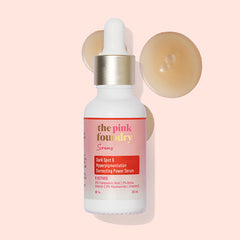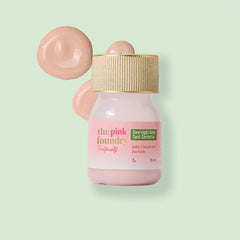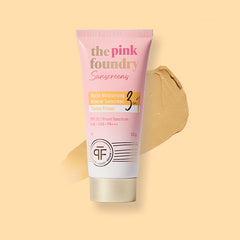How to Reduce the Redness of Acne and Pimples?
Our skin contains pores. These pores may experience blockage that can be caused due to excess dirt, bacteria, or oil in the skin. During this time, your skin is more susceptible to a zit or a pimple. But when these pimples become common on your skin or occur more frequently than usual, it may be a sign of acne.
The development of acne can cause redness on the skin, which can lead to bumpiness and itching. That is why it is important to care for your acne-prone skin by learning how to reduce redness of acne.
Doctors are timely asked about how to reduce redness of acne. These dermatologists may provide numerous medications to control acne on your skin. But, they might not always be as effective as expected. That is why this guide is the exception you need. Here’s how!
What Is Acne And Pimple Redness?
Did you know that nearly 9.4 percent of individuals experience acne globally? This acne can be the result of diverse factors. A change in hormones, consuming certain medications, and a change in diet are some of the main factors. Popping a pimple and heredity can also contribute to the list of acne redness.
Although most people often assume that acne and pimple redness are the same, they are not. In fact, there is a massive difference between the two. Acne can be more severe in comparison to a pimple. It is more frequent, elevated, and tender to touch. The former can also persist longer than a pimple. That is why both of them require different treatments too. The Pink Foundry can provide the right products for both.
Reason for Redness Caused By Acne and Pimple
Generally, there are four main causes of acne and pimple redness-
1. Excess oil production in the skin
The presence of sebum can cause an excessive amount of oil secretion in the skin. It can worsen acne redness.
2. Inflammation
When the sebum present in the hair follicles starts to oxidize, it may be a sign of systemic inflammation. This indicates damage in the sebum and decreased level of Oxygen in the skin. So, if you wish to learn how to reduce redness of acne, it is important to deal with this.
3. Bacteria
When you ask an expert how to reduce pimple redness, they are more likely to tell you to control the growth of bacteria on your skin. Excess bacteria can cause your skin to break out, leading to consistent zits and blemishes.
4. Clogged Hair Follicles and Dead Skin Cells
Your hair follicles can get clogged with oil. Dead skin cells may also cover the region. Both these factors largely contribute to pimples, blackheads, and whiteheads that may eventually elevate the chances of acne. So, when looking for ways how to get rid of red acne marks, it is important to consider this point.
Some other factors that may result in this-
- Anxiety and excessive levels of stress
- Hormonal changes
- Dietary changes
- Lack of sleep
- Consuming certain medications
Also read: The ultimate guide to dealing with red pimples on your face
How to Reduce the Redness of Acne and Pimples?
Upon speaking to professionals at The Pink Foundry, people often tend to ask them how to reduce acne redness overnight? The good news is we have just what you need. Here are certain products that will help bring immediate relief.
1. Overnight Acne Spot Corrector
The mask helps to remove dead skin cells and blackheads and makes your skin smoother.
2. Anti-Acne Serum
Helps eliminate excess sebum by almost 82% and blemishes by almost 72% in nearly four weeks. Also helps exfoliate the skin gently, leaving it flawless in no time.
3. Acne + Pigmentation Relief Duo
Helps decrease hyperpigmentation, fade marks and dark spots on time. The product also helps even out skin tone, soothes skin, and assists with reduction in dark acne marks.
How To Get Rid of Redness on Face from Pimples And Acne?
1. Follow A Healthy Skin Care Routine
Follow a simple 3-step skincare routine that includes-
Step 1- Cleansing
Step 2- Moisturizing after face wash
Step 3- Apply a potential sunscreen before stepping out.
You can also fall back on oil-free matte moisturizer with Blue light protection. It not only hydrates your skin by almost 60% in only 30 minutes but also provides incredible anti-inflammatory effects.
When wondering how to reduce redness on face from acne through the nighttime skincare routine, you can follow the same guide as mentioned above. However, skip the final step as there won’t be a need for that during nighttime.
2. Apply Ice
Ice provides cooling effects to the skin that can soothe your skin and provide immediate relief. It can also help reduce the redness caused due to pimples and acne.
3. Use Aloe Vera Gel
With strong anti-inflammatory and anti-bacterial properties, Aloe Vera Gel can act as a great treatment for your skin. It can help soothe the acne and pimple gently. The natural remedy is also safe for all skin types.
Conclusion
We hope we can help you find out how to reduce redness of acne. Follow the guide we have mentioned above to seek the right assistance on time. You can also tap into the best products of TPF to see how they can bring a much-needed difference to your skin.
Also read: Acne Marks vs Acne Scars: Understand the Difference Between Acne Scars and Acne Marks
FAQs:
1. How To Get Rid Of Acne Marks Through The Right Diet?
Include more Yellow and Orange fruits into your daily diet. Tomatoes, Quinoa, Blueberries, and Whole-wheat bread are also great recommendations by our experts at TPF.
2. Can acne be reduced through sufficient sleep?
Yes. Experts suggest having sufficient sleep of 7 to 8 hours daily to relax your body and let your skin heal.
3. What Habits Can Elevate Acne?
- Sharing makeup or makeup brushes.
- Sleeping with makeup on.
- Washing my face excessively throughout the day.
- Allowing the skin to dry out.
- Smoking
















